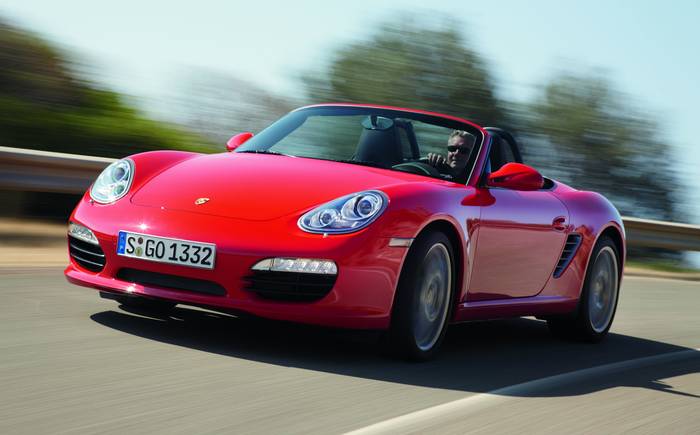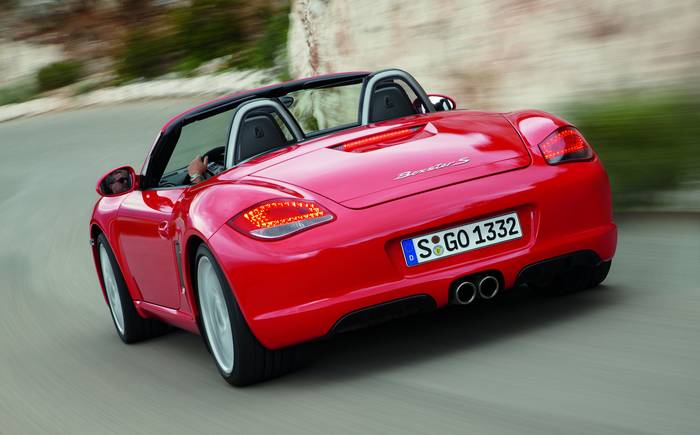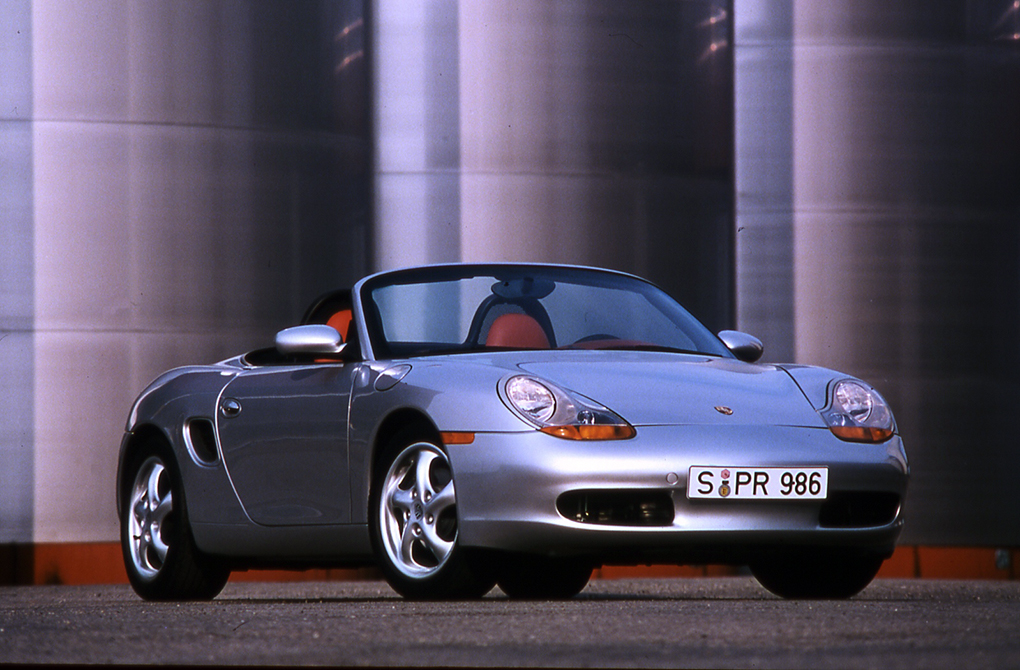Porsche Boxster review Mk1 (1996-2004) & Mk2 (2004-2012)
How to buy the perfect used Boxster

What is the Porsche Boxster?
For Porsche, the arrival in 1996 of its most affordable sports car, the Boxster, couldn’t have come soon enough. The Boxster was part of a strategy that would ensure the car maker’s survival. In an effort to keep development costs as low as possible, it shared as many parts as possible with the 911.
Critics and Porsche fans were initially sceptical, but as the years passed the Boxster earned a reputation as a proper Porsche that was thrilling to drive and satisfying to live with. The Mk 1 (known as the 986) initially featured a 2.5-litre flat-six motor, located behind the two seats. In 2000 it was enlarged to 2.7 litres. At the same time, a higher performance 3.2-litre S was launched, complete with larger brakes.
The Boxster became the yardstick by which all other sports cars were judged, including Porsche’s own 911. It blended thrilling performance and excellent road holding with surprising practicality (the Boxster effectively has two boots) and impressive build quality.
In 2004, a second-generation Boxster (known as 987) was launched. Again, it featured 2.7 and 3.2-litre engines. The former was upgraded from 240bhp to 245bhp in late 2006, and at the same time the latter was changed to a 3.4-litre flat-six with 295bhp.
Along the way, a number of special editions were launched including (in 2009) the most desirable and acclaimed of all, the Boxster Spyder. Either of the first two generations of Boxster are among the best used sports cars money can buy. However, you need to choose between the many used Boxsters carefully; some have been poorly treated during their lifetime and will have missed vital maintenance.
Search for and buy a used Porsche Boxster on driving.co.uk
The drive
 Let’s start with the Mk 1 Boxster. The earliest 2.5-litre versions can feel a little underpowered, and suffered from mechanical issues that prompted the change to the more robust 2.7 engine, so discount them.
Let’s start with the Mk 1 Boxster. The earliest 2.5-litre versions can feel a little underpowered, and suffered from mechanical issues that prompted the change to the more robust 2.7 engine, so discount them.
Both the 2.7 and 3.2 water-cooled flat-six engines have real character, with a distinct sound that gets better the higher you rev them. There is a noticeable performance difference, so it’s a good idea to try both if possible. On the money front, 2.7 cars of a similar age and mileage to a 3.2 are approximately £3,000 cheaper.
On a twisting B-road the mid-engined chassis really comes alive. The Boxster has beautifully weighted steering that gives plenty of feedback, helping the driver place the car precisely through corners. There’s a high level of grip, and body control over undulating roads is impressive. If a car feels unsettled, there’s a good chance its suspension bushes are worn, or a spring is cracked.
The Mk 2 Boxster was a little quicker and more capable, and brought more comfort to the driving experience, doing a better job of riding bumps. It had a wider track and larger wheels and tyres, as well as steering with a variable ratio, raising its performance through corners.
The engine noise was just as intoxicating , the braking was better and options such as the Porsche Active Suspension Management (PASM) were well suited to drivers who took their Boxster on the occasional track day.
Sport Editions added a rear spoiler, a painted rear diffuser and a twin exhaust outlet, while satellite navigation was included with PCM (Porsche Communication Management). This last adds over £1,500 to the prices of second-hand cars.
The interior
The first-generation Boxster shared its dashboard and many of its interior parts with the Porsche 911 (the 996 version). To be honest, it feels dated, whereas the second-generation Boxster still looks stylish and is noticeably better built.
The driving position of either model is excellent. You sit really low, closer to the road than in many other sports cars. The waistline of the bodywork is relatively high, so it feels very snug, even with the roof lowered.
There is a surprising amount of stowage space, both in the cabin (we like the handy armrests in the doors which double as lidded cubbies) and the two “boots” that the car has (one behind the engine, the other beneath the bonnet).
The second-generation model could be ordered with Porsche’s Sport Chrono Pack. This changed the throttle response and power delivery of the engine, and included a stopwatch in the dashboard. It’s a bit of a geek’s gimmick, and many owners report that they rarely use it.
It’s important to check that all electric items work, and we mean all of them. Work your way through the lot, and don’t forget about the most important one of all: the electric roof.
What to look for with a used Porsche Boxster
With many used examples to choose from and great variety in their specifications, buying a used Porsche Boxster is not a task you can rush, so take your time and compare as many cars as you can.
Even before you see the car, you should have established that it has a full service history, with a stamped service book and accompanying receipts detailing all work carried out. A Porsche centre is preferable, but there are many knowledgeable specialist agents that have a good reputation, so if in doubt, ask around on the Porsche forums.

Boxsters that are not well cared for can suffer serious problems. Batteries permanently stop holding their charge and the brake discs become corroded. Even well-cared for models can suffer cracked cylinder bores without warning, requiring a costly engine rebuild. Then there is the dreaded “intermediate shaft failure”. This is driven by the crankshaft in order to operate the camshafts, and the problem is so common that in North America, Porsche has agreed to repair Boxsters and 911s with the flat-six engine (subject to certain criteria).
If the car has a manual transmission, take a sloppy or stiff gearchange and heavy clutch pedal to mean there is trouble looming. Porsche specialists recommend that the lubricants are changed more frequently than the factory suggests.
Always give the roof and associated rubber seals the once over for damage, and look for signs of water leaks such as wet carpets or excessive condensation on window glass. Check the tyres all match and that the exhaust system is (relatively) quiet, as replacement exhausts for these cars are costly.
There have only been two factory recalls of the Boxster, one issued in 2006 concerning parking brake failure, the other dated 2010 for a detached sun shield.
The One to Buy
A 2010 60 Boxster 3.4S with 20,000 miles; pay approximately £27,000
Factfile
- Engine:
- 3436cc, 6 cylinders
- Power:
- 306bhp @ 6400rpm
- Torque:
- 266 lb ft @ 4400-5500rpm
- Transmission:
- 6-speed manual
- Acceleration:
- 0-62mph in 5.2sec
- Top Speed:
- 169mph
- Fuel
- 30mpg (combined)
- CO2:
- 221g/km
- Road Tax Band:
- K
- Dimensions:
- L 4342mm, W 1801mm, H 1294mm
Porsche Boxster used rivals
- BMW Z4 35i sDrive DCT for sale (click for used car prices on driving.co.uk)
- Mercedes-Benz SLK 350 AMG Sport for sale (click for used car prices on driving.co.uk)
- Audi TT RS Roadster for sale (click for used car prices on driving.co.uk)




